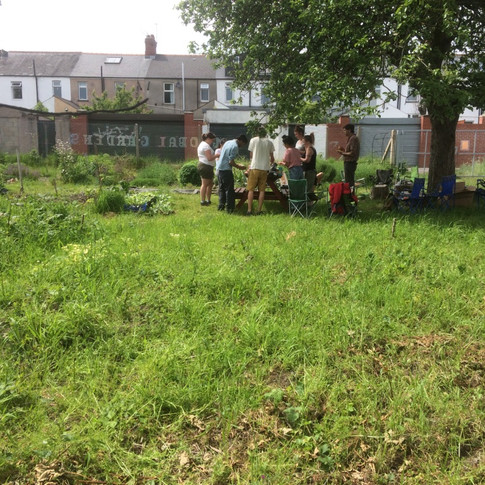FOREST GARDENING WORKSHOP
- Global Gardens
- May 25, 2019
- 3 min read
Today we had a workshop at Global Gardens on forest gardening. As one of the Permaculture Association Local Gatherings 2019, the aim of this workshop was to bring people together to learn more about permaculture and forest gardening.
Beginning with a tour around the Global Gardens site, we then sat down to have a chat about some of the basic principles of forest gardening.
A forest garden has been described as a garden modelled on a young natural woodland. Most of the plants in a forest garden are perennial and tend to be planted for a range of functions. Poppy introduced the notion of the seven level beneficial guild.

Working in groups, we thought about examples of plants that might work in each level of a forest garden and what role they might play in an integrated ecological system. This could be, for example, offering shade, offering food for humans and animals, providing structure and supporting fertility building.
A forest garden is designed to be self-fertilising, including plants that are nitrogen fixing and dynamic accumulators (bringing nutrients up from the subsoil). We learnt a bit about the difference between plants that are nitrogen fixing (absorbing nitrogen from the air into the soil - such as legumes) and plants that are nitrogen lifting (bringing nutrients up from the ground and absorbing surplus soil nutrients so they are not washed away - such as phacelia). We considered different nitrogen fixing/lifting plants through the layers of a forest garden. For example:
Italian alder (large tree),
Sea buckthorn (small tree),
Oregon grape (shrub),
Gorse (shrub),
Wisteria (climber),
White clover (herbaceous),
Bird's foot trefoil (herbaceous),
Wood vetch (herbaceous),
Black medick (annual),
Sweet pea (annual),
Clover (ground cover).
This group work was aided by a range of books brought along for reference including 'Creating a Forest Garden' and 'How to grow Perennial Vegetables' by Martin Crawford of the Agroforestry Research Trust and 'Edible Perennial Gardening' by Anni Kelsey.
After feeding back on the diverse range of plants that could form the beneficial guild of a forest garden, it was time for some practical action! We made a start on digging over the patch located at the top of the Global Gardens ready for planting.

All that digging worked up our appetites. We stopped for lunch which included some delicious salads thanks to Riverside Sourdough and a range of treats brought along by workshop participants. Yum!
Energised after a restorative break, we got back to it ... we planted out a number of cardoons and three varieties of Artichoke: 'Green Globe', 'Violetta di Chioggia' and 'Romanesco'. The intention was to form a herbaceous perennial layer which also acts as a kind of edible hedge (artichokes can grow up to 1m tall).
It was so satisfying to see the site transform. As we stepped back, one of the participants described this transformation as a kind of "permaculture blitz" where a group of people gathering to work together to apply permaculture principles to a site - and share food. We thought this was a great idea and plan to carry the idea forwards in Cardiff. If you would like to get involved in some #permablitzing, drop us an email soilandclay@gmail.com.

Many thanks to the Permaculture Association for supporting this workshop as part of the Local Gathering Fund 2019. It is amazing what can be achieved on a sunny day in the garden with a group of folks working together. We look forwards to carrying on with Cardiff permablitzes in the future. Watch this space!
Recent Posts
See AllThis is a recipe inspired by Cerys Matthews' Happy Foodie recipe. It is a slight twist on her recipe... Ingredients 2 Onions (finely...























